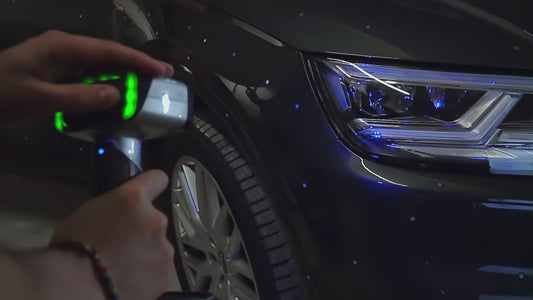3D scanning is cutting-edge technology that has been a game changer in sectors such as manufacturing, engineering, and design, facilitating precise measurements and fostering greater efficiency. With 3D scanning, you can capture detailed data points from real-world objects and transform them into virtual models on your computer.
With metrology being the study of measurements, what does 3D scanning offer? Let this article be your quick guide to 3D scanning for metrology to help you understand more.
What Is Metrology?
Metrology, at its core, is the science of measurement. It’s a discipline that permeates virtually every aspect of our lives. Ensuring the pieces of a car engine fit together seamlessly, whether it’s determining the exact amount of medicine in a dose or knowing the temperature outside, metrology is at work.
It provides the standards for our measurements, creating a common language that everyone can understand and trust. In manufacturing, aerospace, and engineering industries, metrology goes a step further, ensuring precision, quality control, and regulatory compliance.
How Does 3D Scanning Work?
3D scanning is a fascinating and complex process, yet its basic principle is simple. The 3D scanner emits a beam of light (often a laser) onto the surface of an object. As the light interacts with the object’s surface, it bounces back to the scanner, where sensors record the time it takes for the light to return.
This information, along with the known speed of light, allows the scanner to calculate the distance from the scanner to the object’s surface at each point. The scanner collects many data points, forming a point cloud, by repeating this process millions of times over the object’s surface and from different angles
This point cloud is a precise digital representation of the object’s shape and size. Sophisticated software then stitches these data points together to create a detailed 3D model, which scientists and engineers can manipulate, measure, and analyze with incredible accuracy.
How Can You Incorporate 3D Scanning Into Metrology?
3D scanning offers a wealth of opportunities for enhancing metrology practices. As an advanced measurement tool, it can provide a remarkably detailed and accurate 3D model of an object, overcoming traditional barriers of complexity, and size. This precise modeling ability enables metrologists to capture comprehensive measurement data efficiently.
Industries that require precise measurements, like automotive, aerospace, or manufacturing, can particularly benefit from 3D scanning. This technology offers an innovative solution to quality control, allowing for thorough and accurate inspection of parts and assemblies. It scans and creates highly accurate 3D models in a much shorter time frame for efficient reverse-engineering work.
Moreover, because 3D scanning is contactless, it can be a beneficial tool to use over a coordinate-measuring machine (CMM). CMMs often use touch probes, which aren’t always the best to use in situations where the object being measured is delicate or damaged.
As technology continues to advance, so does metrology and 3D scanning. With the introduction of new sensors, faster processing speeds, and improved algorithms, we can expect even more sophisticated and accurate 3D scanning capabilities in the future.
This quick guide to 3D scanning for metrology covers the basics, but the technology’s future is vast and bright. With the rise of handheld 3D scanners, such as 3D Wonders' blue laser scanners, Freescan Combo and Freescan Trio, we can expect increased accessibility and ease of use for metrology purposes. These new handheld devices are opening a new world of possibilities!






